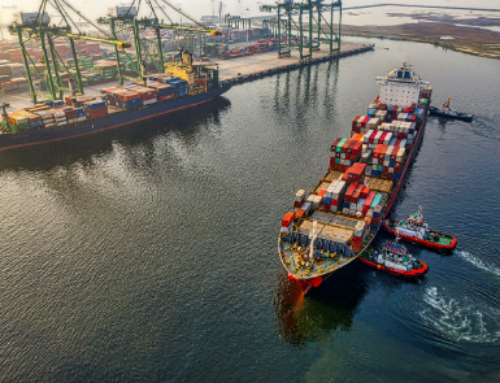Economic Pulse – March 2023
The advent of new technologies has often raised concern that new, often more efficient ways of doing things, will lead to job displacement. This fear has not been limited to blue-collar jobs, as white-collar jobs have been equally “threatened” by the introduction of technologies such as calculators on computers.
In very simple terms, anything that improves the way we do things can be thought as new technology. At points in human history many new technologies emerged at roughly the same time. These points in time are what we often refer to as “technological revolutions”.
Various technological revolutions have changed the way humans produce what they need to survive and thrive, and by extension threatened the jobs of those employed in activities that previously served these needs. The Industrial Revolution saw the introduction of new technologies and production processes that enabled the mass production of goods, leading to the displacement of some jobs and the emergence of others. The Digital Revolution followed, which saw the introduction of computers and the development of the internet and digital communication, with a huge impact on the workplace and productivity per labour hour.
We are on the cusp of a new technological revolution with artificial intelligence, or AI, becoming ever more mainstream, bringing with it the potential to cause significant disruption to the modern workplace. AI is able to automate certain tasks and processes that were previously done by humans, and as with previous technological revolutions, much animosity exists about what AI means for the future of work. Will AI replace humans in the production of goods and services? Certainly. Will AI lead to large-scale unemployment and an increase in some of today’s primary global challenges such as poverty and inequality? Lets very briefly explore what has happened during the past two technological revolutions as a guide for future expectations.
The series of technological advances that took place during the Industrial Revolution, including improvements in medical technology, led to the largest global population boom in history up to that point. The global population was roughly 600 million people in 1700, rising to around 1.65 billion by 1900 as a result of technological advances. The Industrial Revolution had drastically improved the means of production, enabling a much larger population with higher standards of living.
The Digital Revolution, for our purposes, started with Claude Shannon’s foundational work on digitalisation as expressed in his 1948 article titled “A Mathematical Theory of Communication”. And as with the Industrial Revolution, the emergence of new technologies such as calculators and computers were viewed with scepticism by a large portion of the workforce at the time. Job displacement was a very real concern.
Fortunately, more relevant data exists for more recent periods, which can assist us in looking directly at the impact of digitalisation on labour markets and whether large-scale job losses were persistent or not. The short answer is no. Yes, of course some job losses were attributable to the Digital Revolution. But, using the United States as a proxy, we can observe that despite the US labour force growing from about 62 million people in 1950 to about 165 million people today, long-term unemployment was relatively stable from 5.2% in 1950 to 3.4% today. Sure, these numbers are still relatively broad indicators, and factors such as labour force participation have not been accounted for, but I believe they still illustrate the point that technological progress has been a major net positive in terms of labour output and the number of people engaged in work of all kinds.
Now back to AI and the potential threat this new technology poses to work as we know it. AI has shown to be able to produce incredibly detailed and accurate responses to prompts. ChatGPT, the current frontrunner in terms of large language model AI, has already disrupted our perception of what is possible for a non-sentient technology. ChatGPT has enabled an 11-year-old to write a computer game, passed graduate level exams at the University of Minnesota Law School, and allowed a business owner to insource the generation of marketing material. Used correctly, AI is stacking up to be an incredibly useful tool!
And that is just it. AI, in its current iteration, is just a new tool. Sure, it will displace many jobs initially. But the past has taught us that new technology, or new tools, are far more relevant as instruments to unlocking further human creativity and productivity. New technology has in the past led to more work because it improved access to products and services that fulfilled human needs, which improved standards of living, and in the process changed our most pressing wants and needs. New jobs emerged to fill these needs. Previous technological revolutions improved the living standards of billions of people, and the AI revolution is an extension of those advances. On an individual level, it is each person’s own responsibility to assess how this new tool will change the way we currently work, and to make the most of the opportunity that such a tool presents.
Article by Eric van Zyl, Managing Director Designate at IJG, an established Namibian financial services market leader. IJG believes in tailoring their services to a client’s personal and business needs. For more information, visit www.ijg.net.








